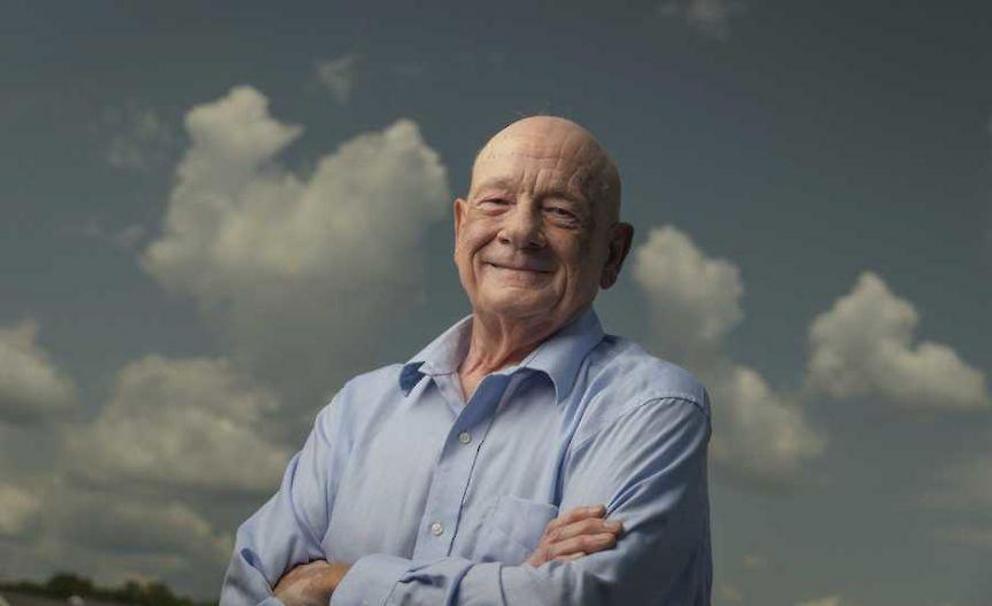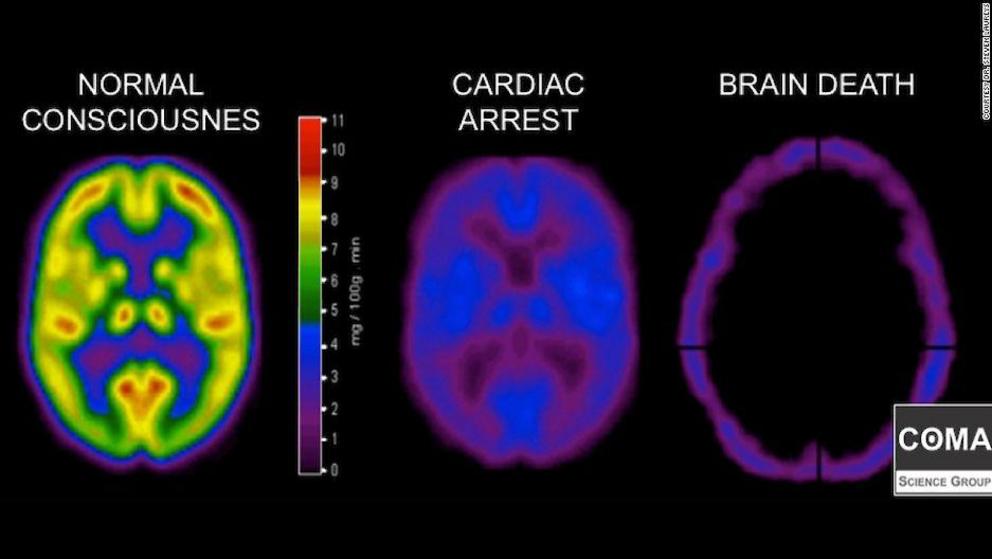Near death experiences (NDE)
It is estimated that around 1/3 of people who have died and come back, often those who suffer a cardiac arrest report what is called a Near Death Experience. Let's look at NDEs through the research of DR Raymond Moody as well as the clinical research conducted by AWARE in several hospitals.
It is estimated that around 1/3 of people who have died and come back, often those who suffer a cardiac arrest report what is called a Near Death Experience. Let's look at NDEs through the research of DR Raymond Moody as well as the clinical research conducted by AWARE in several hospitals.
What is an NDE?
Also known as a Near Death Experience, the term was coined by Dr Raymond Moody in 1975 in his book Life After Life. Dr Moody recorded and also compared the experiences of 150 people who were clinically dead or almost dead and recovered and came back to life.
It’s a patterned experience people have after dying or almost dying. No two NDEs are exactly the same, but there are striking commonalities. Most people say they seem to leave their bodies and watch from above as their body is resuscitated. They pass down a dark tunnel and come out into a brilliant, warm and loving light.
They meet deceased friends and loved ones in spirit form. And they undergo a panoramic or holographic review of their lives in which they witness everything they’ve done from an external point of view. Often, this life review happens in the presence of a being of love and light. - Dr Raymond Moody

Image Source: Guideposts
Dr Moody explains 9 typical elements that are experienced by those who are having an NDE
- A Strange Sound: A buzzing, or ringing noise, while having a sense of being dead.
- Peace and Painlessness: While people are dying, they may be in intense pain, but as soon as they leave the body the pain vanishes and they experience peace.
- Out-of-Body Experience: The dying often have the sensation of rising up and floating above their own body while it is surrounded by a medical team, and watching it down below, while feeling comfortable. They experience the feeling of being in a spiritual body that appears to be a sort of living energy field.
- The Tunnel Experience: The next experience is that of being drawn into darkness through a tunnel, at an extremely high speed, until reaching a realm of radiant golden-white light. Also, although they sometimes report feeling scared, they do not sense that they were on the way to hell or that they fell into it.
- Rising Rapidly into the Heavens: Instead of a tunnel, some people report rising suddenly into the heavens and seeing the Earth and the celestial sphere as they would be seen by astronauts in space.
- People of Light: Once on the other side of the tunnel, or after they have risen into the heavens, the dying meet people who glow with an inner light. Often they find that friends and relatives who have already died are there to greet them.
- The Being of Light: After meeting the people of light, the dying often meet a powerful spiritual being whom some have identified as God, Jesus, or some religious figure.
- The Life Review: The Being of Light presents the dying with a panoramic review of everything they have ever done. That is, they relive every act they have ever done to other people and come away feeling that love is the most important thing in life.
- Reluctance to Return: The Being of Light sometimes tells the dying that they must return to life. Other times, they are given a choice of staying or returning. In either case, they are reluctant to return. The people who choose to return do so only because of loved ones they do not wish to leave behind.
https://www.near-death.com/science/experts/raymond-moody.html
Are NDE's a hallucination?
One of the arguments from the Scientific community is that an NDE is simply the way the brain is reacting to effectively shutting down. Neuroscientists Olaf Blanke and Sebastian Dieguez suggest that there are two types of Near Death Experiences.
- The first is in the brain's left hemisphere which makes a person feel like they are flying and an altered sense of time.
- The second is in the brain's right hemisphere where people believe they are communicating with spirits or see people, light, hear voices or music
It is also believed that the temporal lobe plays a significant part. This area is responsible for processing sensory information and memories so if this is disturbed, it could cause a person to feel, hear or see things that aren't happening, remember things differently or even lose memories.

Image Source: CNN
Other research has suggested that the brain responds in the same way that it does when a person is given the drug Ketamine.
This new study compared the stories of 625 individuals who reported NDEs with the stories of more than 15,000 individuals who had taken one of 165 different psychoactive drugs. When those stories were linguistically analyzed, similarities were found between recollections of near-death and drug experiences for those who had taken a specific class of drug. One drug in particular, ketamine, led to experiences very similar to NDE. This may mean that the near-death experience may reflect changes in the same chemical system in the brain that is targeted by drugs like ketamine.
https://www.scientificamerican.com/article/new-clues-found-in-understanding-near-death-experiences/
The problem of course when it comes to NDE's is that there is really no way to determine what causes it, why it only seems to happen in 1/3 of people and if what they are experiencing is something spiritual or merely medical.
An interesting argument to the above is that in Dr Moody's studies, he has interviewed people who share an NDE experience.
What I can’t figure out is this—if it’s something physical, then why should bystanders sometimes share in a person’s NDE? This surgeon in Italy, for instance, told me that he was doing an elective operation on a fairly young man in good health. The patient had a cardiac arrest and the doctor was unable to resuscitate him. All of a sudden, the doors of the operating room were flung open and there was this woman.
She said, “I was out in the waiting room and my husband came to me. He told me to tell you that he’s not dead.” The doctor resumed the resuscitation and the patient’s heart started beating again. The first thing the patient said was, “I was up above my body and I kept trying to tell you I wasn’t dead, but you couldn’t hear me. So I told my wife.”
I hear from people all the time about how they participate in someone else’s NDE—that indicates that the experience is not due to oxygen deprivation to the brain. - Dr Raymond Moody
Clinical studies on NDES
In December of 2016, AWARE (AWAreness during REsuscitation) was a study which involved multiple hospitals aimed to test the validity of what a patient was perceiving as a near death experience. The study took place between 2008 and 2015 and was lead by Dr Sam Parnia.
"Contrary to perception, death is not a specific moment but a potentially reversible process that occurs after any severe illness or accident causes the heart, lungs and brain to cease functioning. If attempts are made to reverse this process, it is referred to as 'cardiac arrest'; however, if these attempts do not succeed it is called 'death'. In this study we wanted to go beyond the emotionally charged yet poorly defined term of NDEs to explore objectively what happens when we die." - Dr Sam Parnia, Assistant Professor of Critical Care Medicine and Director of Resuscitation Research at The State University of New York at Stony Brook, USA
15 hospitals participated in the study within the United States, United Kingdom and Austria. Patients who were resuscitated were interviewed in 3 stages.
- To determine if the patient had any perceptions of memory of an event that occurred while they were dead
- To determine if these memories or perceptions were consistent with an NDE
- To verify the accuracy of any visual or auditory observations of the physical environment surrounding the patient that were experienced during the NDE.
To assess the accuracy of claims of visual awareness (VA), 50 to 100 shelves were installed in each hospital near the ceiling of areas where CA resuscitation was likely to occur. Each shelf had an image that was visible only from above the shelf. The study's hypothesis was that the images on the shelves could potentially test the validity of claims of accurate VA, provided enough cases of NDEs occurred where the patient had visual awareness from a vantage point high enough to see the image.
https://iands.org/news/news/front-page-news/1060-aware-study-initial-results-are-published.html
The official study report stated the following results:
Results
Among 2060 CA events, 140 survivors completed stage 1 interviews, while 101 of 140 patients completed stage 2 interviews. 46% had memories with 7 major cognitive themes: fear; animals/plants; bright light; violence/persecution; deja-vu; family; recalling events post-CA and 9% had NDEs, while 2% described awareness with explicit recall of ‘seeing’ and ‘hearing’ actual events related to their resuscitation. One had a verifiable period of conscious awareness during which time cerebral function was not expected.
Conclusions
CA survivors commonly experience a broad range of cognitive themes, with 2% exhibiting full awareness. This supports other recent studies that have indicated consciousness may be present despite clinically undetectable consciousness. This together with fearful experiences may contribute to PTSD and other cognitive deficits post CA.
https://www.sciencedirect.com/science/article/abs/pii/S0300957214007394
Regardless of your belief in this particular area, those who have had such an experience have found it to be quite profound and even life changing. Many find renewed faith in their religion or a stronger connection to their spirituality. There is an endless amount of books written on the topic full of stories from people with such experiences. We know that the brain is our most powerful tool. The question of what happens to our soul or our consciousness when we die is one of the main factors that fuel a lot of people that are researching the paranormal. Is an NDE a glimpse into what is next for us when our journey with our physical body ends, or is it just a nice dream?
I personally have not had an NDE so I am unable to contribute to that part of the conversation. If you feel comfortable enough to share, please feel free to share your experiences or thoughts on this topic.
Don't forget to LIKE the Facebook page for updates on new content www.facebook.com/livinglifeinfullspectrum
Discuss this and other paranormal topics over at the LLIFS Forum https://forums.llifs.com.au/ Register today!
For full references please use source link below

